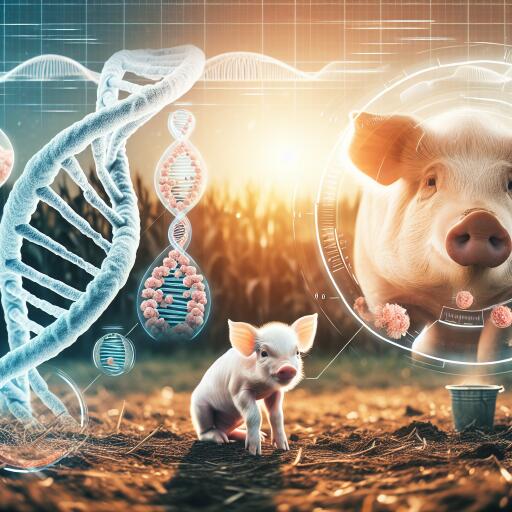The Genetics of Piglet Survival: A Deep Dive into Improving Livestock Well-being and Farm Profitability
Understanding the intricate dance between genetics and piglet survival offers a fascinating glimpse into how advances in genetic science can lead to significant improvements in both animal well-being and farm profitability. Heritability, a core concept in genetics, measures the extent of trait variation within a population that is due to genetic factors. For piglet survival, this means understanding what portion of survival rates can be attributed to inherited traits. While heritability can range widely, it offers a crucial starting point for targeted genetic selection aimed at increasing the resilience and vitality of piglets.
In commercial pig farming, piglet survival rates have been a consistent concern, with averages in the U.S. hovering between 77 to 79%. The challenge often arises from a counterintuitive relationship where efforts to increase litter sizes can inadvertently compromise piglet survival and overall quality. Recent studies and genetic analysis reveal a complex web of correlations between litter size, piglet birth weight, weaning weight, and even the number of functional teats a sow has – all of which directly or indirectly impact survival rates.
However, it’s not all gloomy; the path to enhancing piglet survival is illuminated by genetic research and strategic selection practices. Research has shown that direct selection for traits such as piglet survival – whether as a characteristic of the piglets or of the sow – is not only feasible but crucial. This is reinforced by heritability estimates for piglet survival, indicating that while the trait may be lowly heritable, there is still significant potential for improvement through genetic selection.
Beyond direct selection, optimizing piglet survival involves a multifaceted approach focusing on farrowing survival, preweaning survival, and numerous associated traits. For instance, traits enhancing piglet vitality at birth – crucial for early colostrum intake – have been identified as heritable, offering another avenue for genetic improvement. Similarly, correlations between piglet vitality, average birth weight, and stillborn rates to piglet survival indicate that improving these areas through genetic selection can have a profound positive impact.
Further strides in improving piglet survival rates have been made by examining sow-related traits, namely colostrum quality and quantity, milk yield, and the number of functional teats. These traits not only affect immediate survival rates but set a foundation for overall healthier and more resilient litters. Here, genetic correlations have shed light on the direct benefits of selecting for better milk production traits in sows, including a stronger, more survivable progeny.
As farms navigate the challenges of increasing litter sizes, the importance of functional teat numbers and sow’s ability to provide for her litter cannot be overstated. Genetic correlations strongly suggest that an increased number of functional teats is linked to improved piglet survival, highlighting the necessity of incorporating these traits into genetic selection programs. This strategy holds particularly true in systems that do not employ management practices such as split suckling, which can help ensure more uniform colostrum intake across a litter.
In essence, while the pursuit of larger litters is understandable from a productivity standpoint, it’s clear that without a balanced approach that includes genetic selection for traits directly and indirectly linked to piglet survival, the outcomes may not always be favorable. Through a combination of direct selection for survival and attention to associated traits, there are promising pathways to not only meet but exceed current survival rates, enhancing both piglet welfare and farm viability. For more in-depth insights into the genetics of piglet survival, researchers like Knol et al. (2022) offer comprehensive reviews on the topic, providing a roadmap for future genetic selection strategies.
With the continuous advancements in genetic science, the potential to significantly improve piglet survival through informed breeding strategies is more accessible than ever. By harnessing the power of genetics, the swine industry can look forward to healthier litters, better survival rates, and ultimately, stronger farm operations.
For further inquiries or insights into leveraging genetics for improved piglet survival, feel free to reach out to experts in the field, such as Mark Knauer at reachout@example.com.










